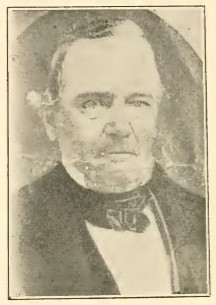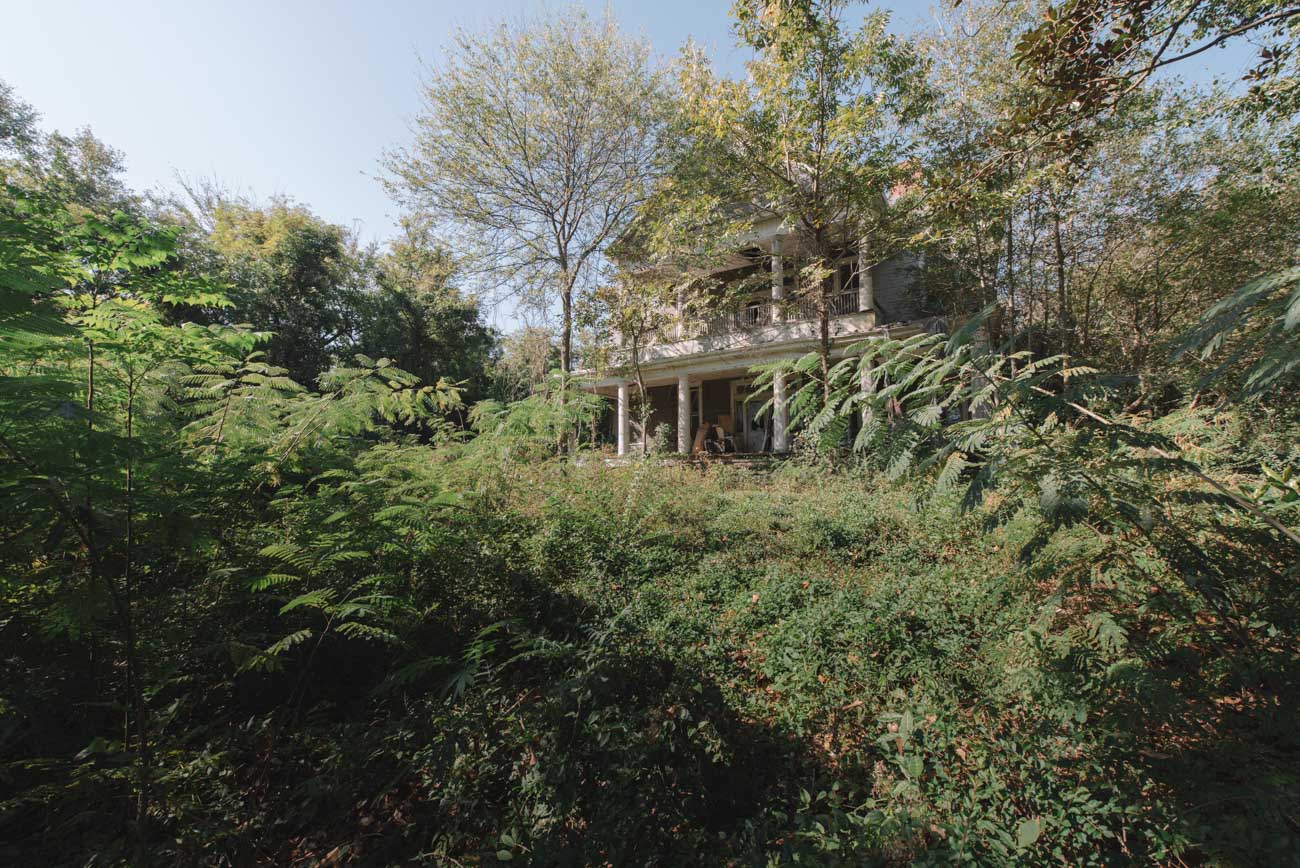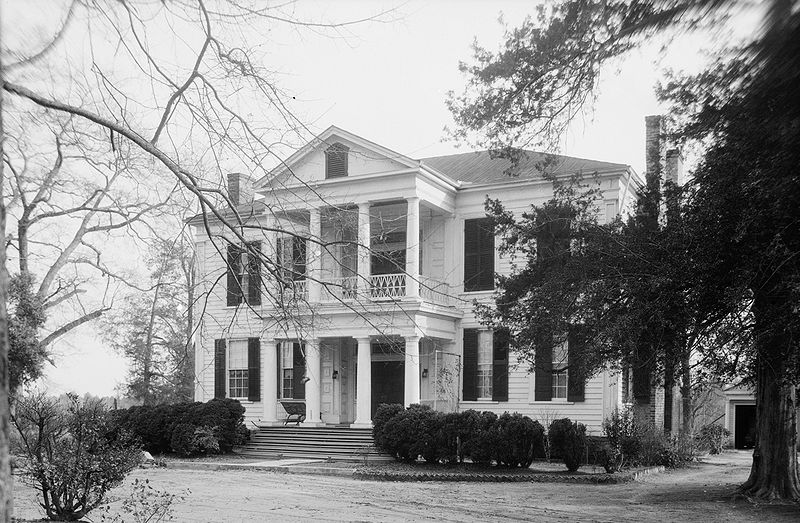| City/Town: • Greensboro |
| Location Class: • Residential |
| Built: • c. 1896 | Abandoned: • 2017 |
| Status: • Abandoned |
| Photojournalist: • David Bulit |
Table of Contents
John Erwin
Located in Greensboro, Alabama, this Greek Revival house known as the Jones House was built around 1896 for Madison Jones Jr. and his wife Rebecca Francis Erwin, granddaughter of Alabama State Senator John Erwin.
John Erwin was born on September 10, 1799, in Pendleton County, Virginia, and relocated to Greensboro in 1818. He married Eliza Margaret Chadwick of Kentucky on October 5, 1822, and quickly amassed extensive land holdings and property in Alabama’s Blackbelt. He was elected as Greene County’s representative in the Alabama Senate in 1831 and was chosen as president pro tempore the next year. He also went on to also serve in the lower house in 1836, 1837, and 1842, as well as being a Congressional candidate in 1845 and 1851 but was closely defeated in both races. He was also heavily involved in the 1852 and 1860 Democratic National Conventions.

Glencairn, Monticello of the Canebrake
Glencairn, also known as the John Erwin House, is a historic house in Greensboro. The house and grounds were recorded by the Historic American Buildings Survey in 1935 and was added to the National Register of Historic Places on January 18, 1978, due to its architectural and historical significance. Construction on Glencairn began in 1830 and was completed in 1837 by John Erwin.
The two-story Greek Revival structure is a frame construction. Glencairn’s five-bay facade features a central, two-story, pedimented portico supported by four Tuscan columns on each level with elaborate wooden panels ornamenting the exterior walls. The exterior corners of the house have paneled pilasters, reaching up to a plain entablature above the second floor. The central ground floor entrance is elaborately treated with heavy paneling, ornate pilasters, and a full Doric entablature framing the entranceway, while fluted trim with corner blocks frame the door, sidelights, and transom. The sidelights and transom are divided by delicate wooden muntins.
The interior of the house is divided into different sections, with a front stair hall separating the double parlors to the west from a large single room and a narrow stair hall to the east. The staircase itself features a double run with a landing and is adorned with elegant details such as slender rectangular balusters per tread and decorated step ends. Fine plaster medallions are located in the front hall and the two rooms to the west. The western rooms are given the most elaborate treatment, with the finest medallions, ornate plaster cornices, and heavy fluted trim adorned with floral carvings in the corner blocks. These details suggest attention to detail and a desire to create a luxurious and elegant living space.
On December 10, 1860, Erwin died unexpectedly at Glencairn after returning from a Grand Tour abroad. At the time of his death, he owned 169 slaves and was a leader in the secession movement that lead to the formation of the Confederate States of America.
Jones House
Although the Jones House was constructed nearly sixty years later, many similar architectural details of Glencairn can be found inside such as the interior staircase configuration, paneled doors, bullseye trim, and the double-tiered gabled portico. The original floorplan featured four rooms on both the first and second floors with a 12-foot wide hallway running down the middle of the house. The kitchen and an outhouse were located outside of the home.
During the Great Depression, many families struggled to make ends meet. The economic downturn left many without jobs and struggling to put food on the table. In the midst of this difficult time, some families turned to renovating their homes into apartments as a way to make extra money. One such family were the Joneses who added four bathrooms, as well as an indoor kitchen to the back of the house. In addition to adding bathrooms and a kitchen, the upstairs rooms were reconfigured into apartments, allowing the family to take in boarders and relatives who had no money. The attic space was also converted into an apartment, complete with electricity and a kitchen.
In 1933, Margeret King Jones Brown, daughter of Madison and Rebecca Jones, had fallen ill and was admitted to Selma Hospital in early-1934 as her condition had worsened. She was discharged and remained at her mother’s house so her family could care for her. By this time, Rebecca was in ill health as well as relied on her children and the kindness of her friends to care for her. After two weeks, Margaret’s health took a turn for the worse, and her husband was summoned from Selma to be at her bedside. She died on March 24, 1934. Her mother died two years later on April 14, 1936.
Gloria G. Cole
In the late 1980s, one of Rebecca Erwin Jones’ granddaughters sold the Jones family home to Gloria G. Cole, a retired anthropologist who served as the curator at nearby Magnolia Grove from 1987 until 2004. Gloria’s body of work includes The Murphy Hill Site (1Ms300): The Structural Study of a Copena Mound and Comparative Review of the Copena Mortuary Complex, and An Archaeological Reconnaissance of the Coosa and Tallapoosa River Valleys, East Alabama, 1983.
The Jones family heavily reduced the purchase price of the home for Gloria. However, this offer came with a catch. In exchange for the reduced price, Gloria promised to do certain things within specific time frames. This likely included restoring the house to its original condition, preserving any historical features, and potentially even opening the house up to the public in some way. Instead, the house quickly deteriorated.

In 2004, Gloria was relieved of her duties at Magnolia Grove after it was discovered that the house and grounds were not being properly maintained. She became a recluse soon after, hardly ever leaving her home. She spent much of her time online talking about anthropology and plants. On one website, she wrote, “I am a retired archeologist and curator of a historic house museum. I live in Greensboro, Alabama, a small rural historic Southern town, with my two dogs, a rabbit, and (by recent count) two cats. I am upgrading a 100-year-old neoclassic house and clearing and planting my two-and-one-half-acre property.” On Quora, a social question-and-answer website, she replied to over 27,900 questions, most of which had to do with anthropology and evolutionary biology.
By January 2021, mail had piled up in her mailbox and police were contacted to perform a welfare check. Gloria was found collapsed in the backyard of her home and had been deceased for a number of days. She was 80 years old. Local authorities noted that the house was in disrepair with no working air conditioning or plumbing. The two cats she wrote about years prior had grown into a colony, soiling the discarded linens and clothing in the home. Although the home looks to have been abandoned for decades, this home has only been vacant for just a few years, leaving one to imagine the filth this poor woman was living in.




































